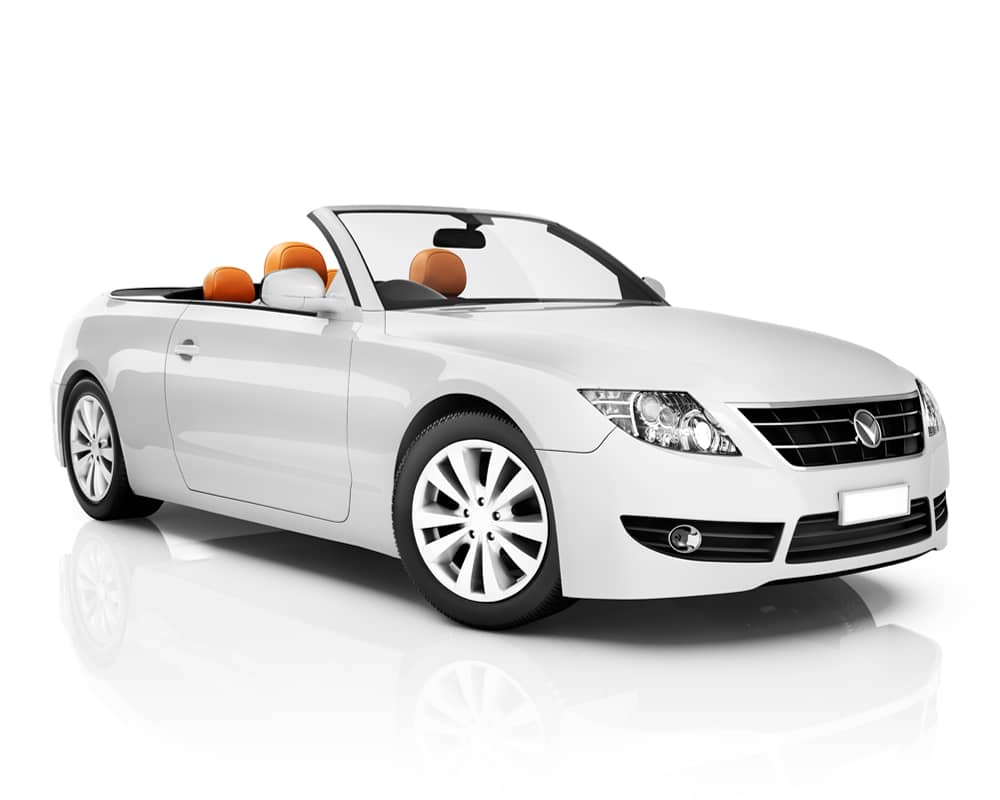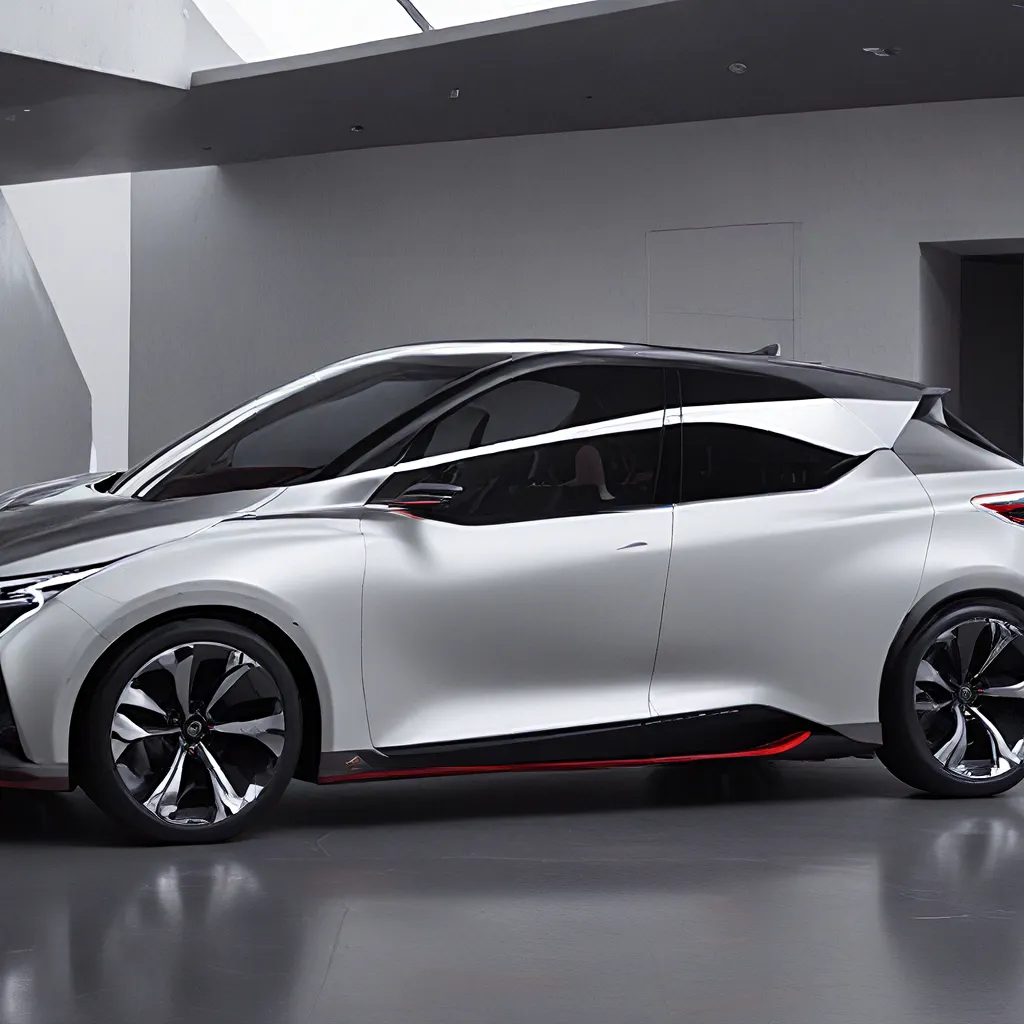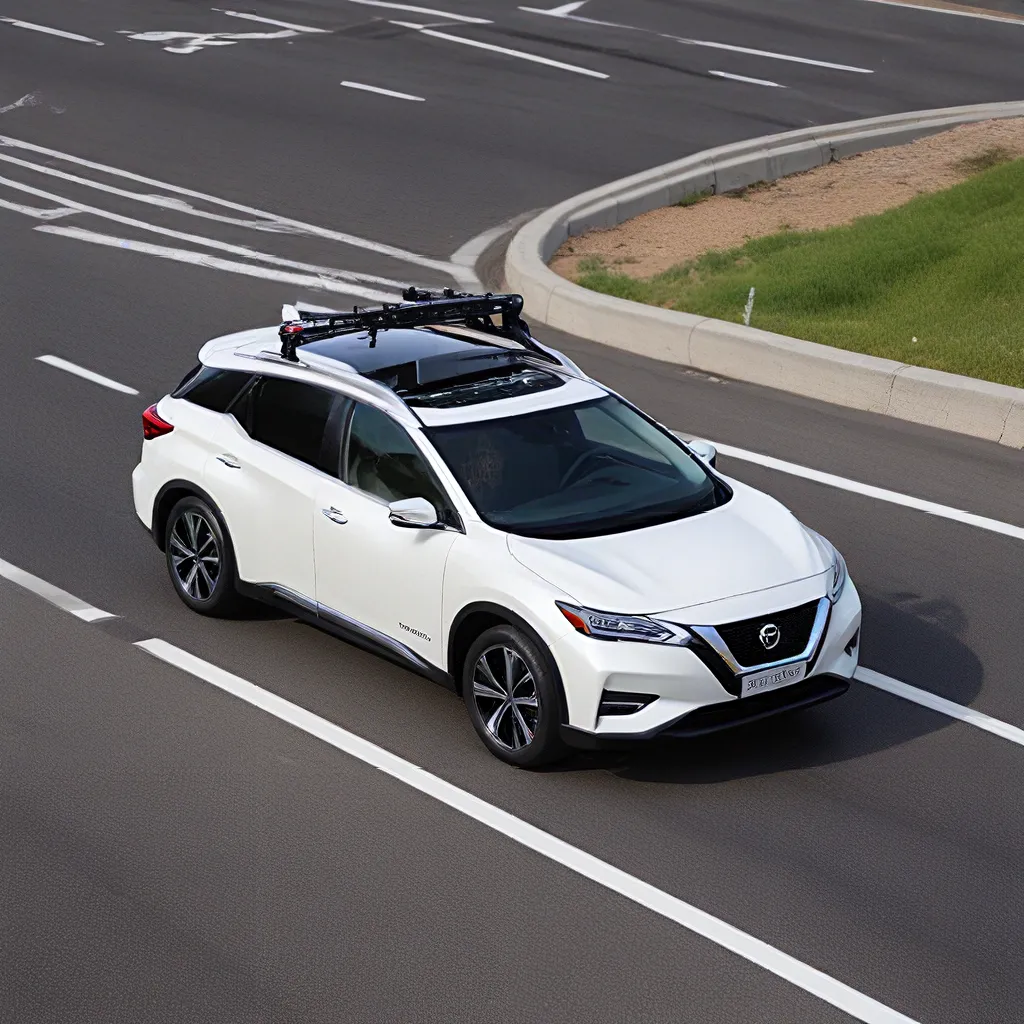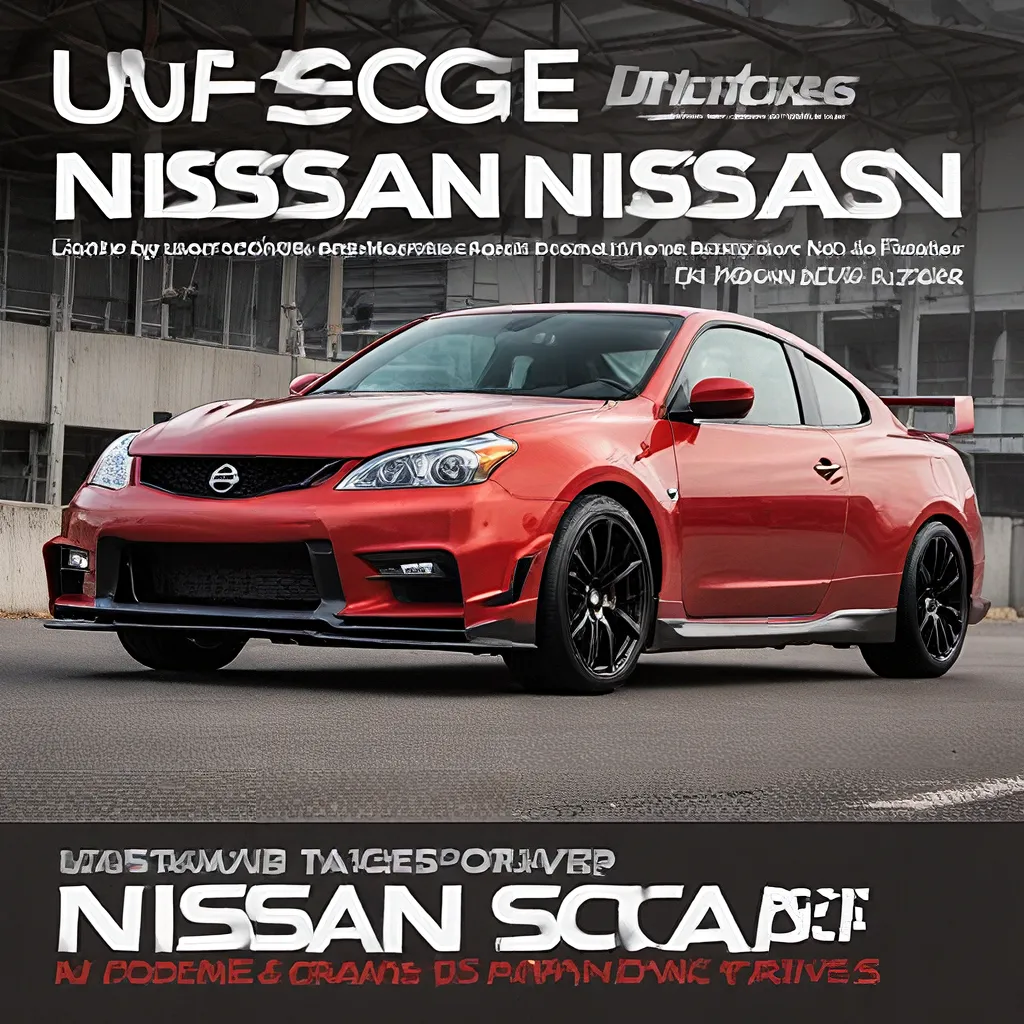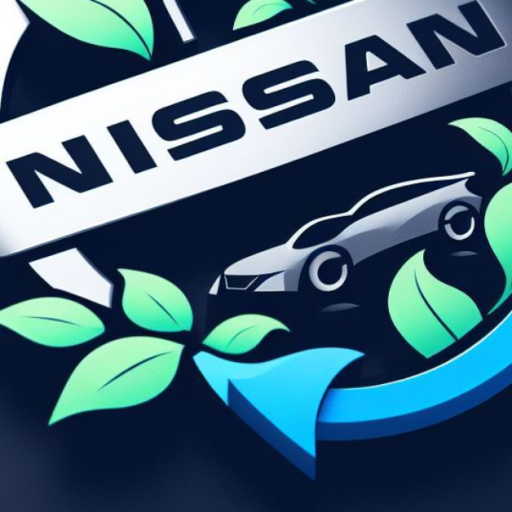Introduction to Vehicle Types
Choosing a new vehicle can be an exciting yet daunting task given the wide variety of options available today. Vehicles now come in many shapes and sizes, each catering to different priorities and lifestyles. By gaining a comprehensive understanding of the major vehicle categories, you can make an informed decision aligned with your needs. In this in-depth guide, we will explore today’s most popular vehicle types ranging from classic sedans to rugged trucks and eco-friendly electric cars. Read on to learn about the key features, performance metrics, efficiency, and top models across each vehicle category so you can find your perfect automotive match!

The History of Vehicle Design
Since the invention of the first practical automobile by Karl Benz in 1886, there has been an evolution in vehicle design leading to the diverse range of models we see today. Early cars were based on horse-drawn buggies with primitive engines added. By the early 1900s, features like steering wheels, windshields, and gas pedals became standardized. The introduction of Ford’s Model T in 1908 made cars affordable for the average consumer.
Vehicle design took a major turn in the late 1920s when closed-body designs with curved rooflines replaced open-top models. Following WWII, cars became lower, wider, and more streamlined incorporating aerodynamic features. The 1950s saw the rise of tailfins and chrome detailing in American cars. Meanwhile, European automakers pioneered small, fuel-efficient models.
The 1970s brought a focus on safety and emissions control. Collapsible steering columns, seat belts, and airbags became mandatory. Catalytic converters and fuel injection improved efficiency. Front-wheel drive increased cabin space in hatchbacks and minivans. The 1980s marked the advent of aerodynamic styling. Vehicles became more rounded with smoother contours. The 1990s saw a revival of retro styling. Since 2000, hybrid and electric vehicles, crossovers, and SUVs have reshaped the automotive landscape. Automotive engineering will continue evolving to meet future mobility needs.
Classifying Vehicles: An Overview
Today’s new vehicles fall under several major categories:
- Sedans – Classic 4-door passenger cars optimizing comfort and fuel economy
- SUVs – Rugged, truck-based models with ample cargo and passenger space
- Trucks – Large hauling vehicles designed for towing and cargo capacity
- Electric Vehicles – Zero-emissions cars and trucks using battery-electric power
- Hybrid Vehicles – Combine gas engines with electric motor and battery for efficiency
- Minivans – Spacious family vehicles with sliding rear doors
- Coupes – Sleek, sporty 2-door cars focused on style and performance
- Convertibles – Coupes with retractable soft tops for open-air driving
- Hatchbacks – Small wagons with sloping rear ends and liftgates
- Luxury Vehicles – Premium vehicles offering opulent amenities and status
- Performance Vehicles – Sports cars built for agility, speed, and quick acceleration
We will now explore each vehicle category highlighting unique features, performance metrics, efficiency, and popular models to help match you with your ideal set of wheels!
Sedans: The Classic Choice
The sedan remains one of the most popular vehicle types comprising over a third of US passenger car sales. Sometimes called a saloon or 4-door, sedans provide a balance of practicality, comfort, fuel economy, and value making them a perennial choice for families and professionals.
Sedans are characterized by a classic 3-box design with distinct engine, passenger, and cargo compartments. They typically seat 4-5 passengers comfortably with a conventional trunk accessed via the rear. While SUVs have eroded some demand, sedans still reign supreme for buyers wanting space, fuel efficiency, and car-like ride and handling without the bulk of an SUV.
Anatomy of a Sedan
Sedans share some standard attributes that define this versatile vehicle type:
- 4 doors provide easy access for rear passengers
- 3 box design with cascading roofline from front to rear
- 5 seats arranged in rows of 2 in front and 3 in back
- Front-engine layout centered between front wheels
- Rear-wheel drive or front-wheel drive powertrain
- Spacious trunk for cargo accessed through rear hatch/lid
- Comfort-oriented suspension and steering for a smooth ride
- Streamlined profile for aerodynamic efficiency
Today’s sedans range from compact economy models to full-size luxury flagships giving buyers choices for any need and budget.
Performance Metrics of Sedans
While not performance cars per se, sedans still aim to deliver a balanced set of performance metrics:
- 0-60 mph in 6-8 seconds for family sedans, as low as 3-4 seconds for sports sedans
- Horsepower between 130-300 in mainstream sedans, up to 500+ in high-end models
- Handling focused on ride comfort versus sporty agility
- Braking 60-0 mph in 120-140 ft. on average
- Top speed 110-155 mph depending on model and trim
Midsize sedans like the Toyota Camry and Honda Accord offer a sweet spot combining brisk acceleration, composed handling, and comfortable cruising capabilities for most needs. Premium sport sedans like the BMW M5 or Mercedes-AMG bring near-supercar performance wrapped in an executive package.
Fuel Efficiency in Sedans
A major factor driving sedan sales is their superior fuel economy compared to SUVs. Lighter curb weights, low drag designs, and refined powertrains enable sedans to travel farther on a tank of gas.
- Compact sedans deliver 30-40 mpg combined city/hwy
- Midsize sedans achieve 25-35 mpg combined
- Full-size sedans still manage 20-30 mpg combined
Advanced engines, transmissions, weight reduction, and aerodynamics make today’s sedans go easier on your wallet. Even performance models now squeeze more miles from each gallon through clever engineering.
Top Sedan Models of 2023
Today’s standout sedans demonstrating this segment’s blend of virtues include:
- Toyota Camry – Top-selling midsize sedan praised for quality, reliability, and strong MPG
- Honda Accord – Athletic, handsome midsize sedan with a premium feel
- Toyota Avalon – Roomy V6-powered full-size sedan exuding comfort
- Tesla Model 3 – Electric sedan with rapid acceleration, tech and 300+ mile range
- BMW 3 Series – Legendary compact luxury sports sedan with world-class driving dynamics
- Mercedes C-Class – Sophisticated midsize luxury cruiser with elegant appointments
- Mazda 6 – Value-packed midsize sedan lauded for sleek styling and agility
- Kia Stinger – Sporty turbo performance sedan with head-turning looks
This covers a sample of the diverse sedans available to suit any need from fuel-sipping commute cars to executive cruisers to tire-shredding speed machines!
SUVs: A Blend of Space and Style
The SUV category has surged in popularity in recent years eclipsing sedans as America’s family vehicle of choice. Short for “sport utility vehicles,” SUVs leverage a pickup-truck foundation to offer generous passenger and cargo capacity blended with car-like comfort and amenities.
While truck-based SUVs maintain an off-road ready image courtesy of their rugged body-on-frame design, most function as road-going people haulers and grocery getters favored for their commanding driving perspective, flexible interiors, and available all-wheel drive. From compact cute-utes to full-size luxury liners, SUVs are taking over thanks to their multi-purpose versatility.
Inside an SUV: Features Breakdown
Some quintessential SUV attributes that set them apart from other vehicle types include:
- High ground clearance for improved visibility and light off-road ability
- Truck-based platform providing ruggedness and towing capacity
- Available AWD/4WD for enhanced traction on slippery surfaces
- Upright profile maximizing passenger and cargo volume
- Raised seating position for improved outward visibility
- Multi-purpose utility with flexible seating and cargo configurations
- Family-friendly features like 3rd row seating, lots of cupholders/USB ports, etc.
SUVs range from barebones utility trucks to opulent luxury lounges on wheels ready for any adventure in style and comfort.
SUVs Performance Analysis
While fuel economy and handling agility take a back seat, SUVs still aim to deliver satisfying everyday performance:
- 0-60 mph in 6-8 seconds for compact and midsize SUVs, 3-4 seconds for high-end performance SUVs
- Horsepower between 200-400 hp for most mainstream models, up to 600+ hp available
- Ride comfort prioritized over sports car handling
- Ground clearance is typically 6″-9″ for moderate off-road ability
- Towing capacity ranges from 1,500 lbs for small SUVs to 8,000+ lbs for full-size trucks
Turbocharged engines, sophisticated traction control systems, and smooth transmissions bring responsive acceleration while advanced suspension design results in decent maneuverability given their size and mass.
Fuel Consumption in SUVs
The laws of physics dictate that larger, heavier vehicles require more energy to move resulting in reduced fuel efficiency for SUVs compared to sedans. However, advanced engineering continues improving SUV mpg:
- Subcompact SUVs achieve 25-35 mpg combined
- Compact SUVs manage 20-30 mpg combined
- Midsize SUVs average 18-25 mpg combined
- Full-size SUVs yield 14-22 mpg combined
Strategies like turbo downsizing, cylinder deactivation, stop-start systems, aerodynamic optimization, lightweight materials, and hybrid powertrains maximize efficiency even in bigger SUVs.
Leading SUV Models of 2023
Today’s lineup of stout SUVs that best exemplify this class include stalwarts like:
- Toyota RAV4 – Top-selling compact SUV offering style, space, and reliability
- Honda CR-V – Cleverly packaged compact SUV delivering comfort and value
- Ford Explorer – Family-focused midsize SUV with room for 7 and extensive tech
- Jeep Grand Cherokee – Capable midsize SUV combining luxury with off-road grit
- Toyota Highlander – Spacious 3-row midsize SUV acclaimed for durability
- Land Rover Range Rover – Pinnacle of refinement and off-road mastery in a full-size luxury SUV
- BMW X5 – Athletic midsize luxury SUV with world-renowned performance
- Porsche Cayenne – Luxury performance SUV blending speed and practicality
This sample shows the range of choices from sensible crossovers to ultra-premium chariots exemplifying the SUV renaissance.
Trucks: The Workhorses
While SUVs cater to suburban family life, pickup trucks remain icons of utility and versatility for work and recreation. Trucks provide extreme hauling and towing capabilities paired with a back-to-basics, no-nonsense design ethos.
The bed (open cargo area) built into the chassis gives trucks unique flexibility for commercial use, farming, construction, landscaping, and weekend projects. High ground clearance, four-wheel drive traction, durability, and customization options equip trucks for off-road adventures. Pickups range from barebones workhorses to highway cruising luxury liners.
Essential Features of Trucks
Fundamental truck features that enable their trademark talents include:
- Open bed for carrying cargo securely separated from the cab
- High ground clearance for off-road competence and stability while hauling/towing
- Heavy-duty frame made from steel for maximum durability and payload capacity
- Removable tailgate for easy access to the truck bed
- 4WD/AWD systems available for enhanced traction especially while towing or off-roading
- Powerful towing-optimized engines paired with transmission modes tailored for hauling heavy loads
- Expandable cab space via full 4-door cabs and optional rear seats
While less refined than SUVs for everyday use, trucks deliver unmatched utility thanks to their specialized design.
Evaluating Truck Performance
Performance priorities for trucks include responsiveness while carrying heavy loads paired with off-road versatility:
- 0-60 mph in 6-9 seconds unloaded, 10+ seconds while towing/hauling
- Horsepower from 300-400 hp for most full-size trucks, with options up to 450+ hp
- Off-road clearance, approach angles, 4WD system modes, and traction optimization for backcountry use
- Max tow ratings from 5,000 to over 12,000 lbs for heavy hauling capabilities
- Bed dimensions and materials like spray-in bed liners optimize durability and space
While not as agile as passenger cars, modern trucks have highly refined road manners making them viable daily drivers.
Fuel Economy in Trucks
Aerodynamic limitations resulting from the open bed and blocky profile combined with robust power requirements leave trucks lagging in fuel efficiency:
- Compact/midsize trucks get 15-25 mpg combined
- Full-size light duty trucks achieve 14-20 mpg combined
- Heavy duty trucks deliver 10-15 mpg combined
Improved engines, transmissions, drivetrains, and weight reduction now enable full-size trucks to crest 20 mpg highway, meeting the needs of personal use buyers.
Prominent Truck Models of 2023
Perennial best-selling trucks famous for their capabilities include:
- Ford F-150 – Top-selling pickup thanks to endless versatility, innovation, and personalization
- Chevy Silverado – Legendary full-size truck balancing capability with refinement
- Ram 1500 – Sophisticated full-size truck lauded for smooth ride and luxe features
- Toyota Tacoma – Top midsize truck offering ruggedness and reliability in a smaller package
- GMC Sierra – Premium truck sibling to the Silverado with sophisticated styling
- Toyota Tundra – Stout full-size truck touting robustness and durability
- Rivian R1T – Electric pickup truck with supercar acceleration and high-tech features
From worksite warriors to cushy crew cabs, today’s trucks deliver power, payload capacity, and performance for any job or adventure.
Electric Vehicles (EVs): The Future of Driving
While still a small slice of the automotive landscape, electric vehicles (EVs) represent the vanguard of an emissions-free transportation future. Propelled by powerful electric motors instead of internal combustion engines, EVs provide exhilarating, seamless acceleration paired with reduced environmental impact.
For decades, limited range and expensive costs restricted EVs to a niche status. Thanks to recent battery technology improvements, EVs can now travel 200+ miles between charges opening the opportunity for mainstream adoption. As production scales up, purchase prices continue falling as well. Multiple body styles from sedans to SUVs to trucks are further expanding EVs’ mass appeal and utility.
Understanding EV Technology
The operating principles underlying electric vehicles include:
- Powerful electric motors capable of delivering full torque instantly for rapid acceleration
- Rechargeable lithium-ion battery packs for energy storage to run motors and vehicle systems
- Regenerative braking captures energy normally lost during braking to partially recharge batteries
- Instant torque delivery resulting in smooth, silent power ideal for stop-and-go driving
- Level 1 and 2 charging takes 8-12 hours, DC fast charging can replenish 200+ miles in under an hour
Forget noisy, polluting gas engines – EVs provide a seamless driving experience with effortless power delivery.
Performance Evaluation of EVs
Electric motors radically reshape the performance equation:
- 0-60 mph in 3-5 seconds for many new EVs thanks to instantaneous torque
- Horsepower equivalent of 200-600 hp depending on model
- Top Speed typically limited to 100-125 mph for most consumer EVs
- Range from 200-400 miles between charges for most 2023 models
- Charging time varies based on charging station power – 30 minutes to 12 hours
- Energy recapture from regenerative braking recharges batteries and enhances efficiency
With their silent operation and spaceship acceleration, EVs provide an altogether different sensation that evokes the future.
Electric Vehicle Efficiency
EVs’ electrical drivetrains enable unprecedented efficiency – critical given limited battery capacity:
- 70-90+ mpge (miles per gallon equivalent) combined city/highway range
- 30-40% greater energy efficiency than comparable gas engine vehicles
- Regenerative braking recoups waste energy from slowing down recharging batteries
- Lower rolling resistance tires further maximize the range
- Sophisticated thermal management regulates battery temperatures to optimize charging and capacity
While range anxiety persists among some drivers, efficiency continues to improve thanks to creative engineering in EVs.
Celebrated EV Models of 2023
Early adopters have proven the capabilities of exciting new EVs including:
- Tesla Model 3 – Top-selling EV offering blistering performance, tech amenities and a 350-mile range
- Ford Mustang Mach E – Electrified muscle SUV with muscular acceleration and 300-mile range
- Rivian R1T – Electric pickup truck delivering supercar speed with impressive off-road talent
- Volkswagen ID.4 – Mainstream electric SUV with 250-mile range and approachable pricing
- Porsche Taycan – High-end electric sports sedan blurring the line between efficiency and supercar excitement
Hybrid Vehicles: Best of Both Worlds
Hybrid vehicles aim to deliver the best of both worlds – combining an internal combustion engine with supplemental electric motors and battery packs to enhance both efficiency and performance.
The gas engine handles primary propulsion and recharges the batteries while the electric motor assists with acceleration and recoups energy while braking. This tandem operation shrinks each powerplant output for greater combined efficiency. Hybrids enable significant mileage gains without the range limitations of pure EVs.
Unpacking Hybrid Technology
Hybrids integrate innovative technologies:
- Smaller gas engines supplemented by electric motor propulsion reduce size needs
- Battery packs enable electric-only operation at lower speeds to save gas
- Regenerative braking recaptures waste energy to recharge batteries
- Electric motor assist provides torque boosts for quick acceleration and passing
- Sophisticated control systems actively regulate powertrain components for optimal efficiency
This teamwork between gas and electric systems allows hybrids to deliver both reduced emissions and enhanced performance – a win-win combination.
Assessing Hybrid Vehicle Performance
Hybrid performance reflects combined powertrain outputs:
- 0-60 mph in 7-8 seconds for many hybrids – on par with conventional vehicles
- Total system horsepower is around 200-300 hp for most hybrids
- Improved responsiveness from instant electric motor torque fill-in
- Enhanced fuel economy via electric-only operation at low speeds
- Seamless transition between gas engine, electric motor, and brake energy recapture
Hybrids feel peppy and responsive around town thanks to electric support while also offering impressive fuel savings.
Fuel Efficiency of Hybrids
Hybrids deliver a significant mpg boost over traditional gas-only models:
- Compact hybrid cars achieve 40-55 mpg combined city/highway
- Midsize hybrid SUVs manage 25-35 mpg combined
- Full-size hybrid trucks yield 20-25 mpg combined
This demonstrates hybrids can boost efficiency substantially while still providing robust capabilities – the inherent advantage of their blended powertrain architecture.
Top Hybrid Models of 2023
Hybrid tech is spreading further throughout vehicle lineups:
- Toyota Prius – Pioneering hybrid hatchback maximizing mpg using proven tech
- Hyundai Ioniq 5 – Funky hatchback with cool styling and over 300-mile range
- Toyota RAV4 Hybrid – Top-selling hybrid SUV with 40 mpg and family versatility
- Honda CR-V Hybrid – Practical compact hybrid SUV achieving 38 mpg combined
- Ford Escape Hybrid – Well-rounded compact hybrid SUV priced under $30k
- Toyota Highlander Hybrid – 3-row family hybrid SUV getting 36 mpg combined
- Ford F-150 Hybrid – PowerBoost system gives this full-size truck 24 mpg combined
This sample shows hybrid technology filtering down to everyday models – saving fuel without compromise.
Minivans: Family-Friendly Options
Minivans remain a top choice for families needing maximum passenger and cargo capacity paired with family-friendly features and creature comforts. Their expansive, flexible interiors, sliding rear doors, and overhead storage give minivans unmatched practicality for daily errands or road trips.
Now built on car platforms, minivans deliver a car-like driving experience and efficiency while surrounding occupants in versatile, spacious comfort. Their roomy layout plus kid-friendly touches make minivans a hard-to-beat option for families.
Essential Features of Minivans
Useful minivan attributes include:
- 3 rows of seating provide room for 6-8 passengers
- Sliding rear doors enable easy access, especially in tight parking spaces
- Reconfigurable seats that flip, fold, slide, and recline in multiple ways
- Overhead storage keeps items handy while freeing space below
- Lower ride heights simplify loading kids, gear, and groceries
- Front-wheel drive platforms based on sedans for maneuverability
- Available AWD provides stability and traction during inclement weather
While less fashionable than SUVs, minivans place priority seating flexibility and interior functionality.
Performance Metrics of Minivans
Minivans aim for adequate everyday performance rather than excitement:
- 0-60 mph in 7-9 seconds – on par with family sedans
- Horsepower ranging from 200 hp for base models to 300 hp for V6 versions
- Composed handling and maneuverability for confident driving despite their size
- Smooth and quiet ride quality keeps passengers comfortable on long journeys
- Latest connectivity and entertainment options to keep everyone happy
Surefooted road manners and brisk acceleration check the boxes for around-town family errands or road trips.
Fuel Consumption in Minivans
Thanks to efficient V6 or turbo-4 engines mated to streamlined shapes, today’s minivans return respectable fuel economy:
- 20-25 mpg city, 30-35 mpg hwy, 23-28 mpg combined for most minivans
Sliding rear doors and more aerodynamic profiles versus truck-based SUVs give minivans better efficiency despite their size. This pays dividends driving kids to activities around town.
Leading Minivan Models of 2023
Standout family haulers in the minivan segment include:
- Chrysler Pacifica – Striking upscale styling and segment-exclusive all-wheel-drive option
- Toyota Sienna – Reliable, comfortable minivan achieving 36 mpg as a hybrid
- Honda Odyssey – Perennially popular minivan touting family-friendly versatility
- Kia Carnival – Sharp-looking newcomer replacing the Sedona aiming for style-conscious buyers
While SUVs dominate family vehicle sales, minivans like these remain an optimal pick for their thoughtful use of interior space.
Coupes: Compact and Sporty
Coupes represent the essence of sporty automotive styling in a smaller 2-door package. With their windswept profiles, driver-focused cockpits, and performance aspirations, coupes promise an athletic driving experience for individuals or couples.
Historically, coupes sit lower and wider than their sedan counterparts trading some practicality for racier looks and handling. While 2-doors limit rear seat space, coupes remain popular for their fun-to-drive demeanor. Options range from affordable sporty coupes to exotic supercars.
Key Features of Coupes
Common coupe attributes include:
- 2 doors for a snug cockpit-like cabin environment
- Sweeping roofline culminating in a short trunk optimized for style over cargo room
- Agile handling via responsive steering and sophisticated suspension tuning
- Driver-focused ergonomics with controls and seating tilted toward the pilot
- Sporty aesthetics expressed through aggressive fascias, intakes and lighting
- A close-coupled back seat intended for occasional use or extra storage space
- Powerful engines in performance variants take center stage
Coupes range from inexpensive economy cars to opulent luxury status symbols but all aim to look and feel special.
Evaluating Coupe Performance
As their styling suggests, coupes prioritize nimble handling and swift acceleration:
- 0-60 mph in under 6 seconds for sport coupes, as low as 2-3 seconds for exotic hypercars
- Skidpad g-forces above 0.85g for high-performance coupes showing tenacious cornering grip
- Firm yet refined suspension calibrations for precise reflexes entering and exiting turns
- Engine notes amplified through the cabin for an auditory thrill
- Driver-focused cockpit layouts put controls within easy reach
Behind their come-hither styling, coupes deliver thrilling performance designed to match their rakish looks.
Fuel Efficiency in Coupes
The quest for sleek styling does incur some fuel economy compromises for most coupes:
- Subcompact economy coupes achieve 28-35 mpg combined
- Compact sport coupes average 20-28 mpg combined
- High-end performance coupes yield 16-22 mpg combined
Thankfully, turbocharging, direct injection, and engine stop-start systems squeeze out more mpg without hindering performance. Select hybrid coupes like the Honda Insight also balance efficiency and economy.
Popular Coupe Models of 2023
A sampling of alluring coupes on the market includes:
- Toyota 86 – Lightweight rear-drive sport coupe providing pure driving thrills
- Ford Mustang – Iconic 2-door muscle car balancing power, performance and practicality
- Chevy Camaro – Potent pony car mixing retro style and intense performance
- BMW 2 Series – Driver-focused coupe packing technology, refinement and handling agility
- Porsche 911 – Benchmark 2-door sport coupe offering everyday usability and world-class precision
- Dodge Challenger – Unapologetic 2-door brute available with 797 hp under the hood
From affordable style to exclusivity to sheer adrenaline, today’s coupes retain their emotional draw despite declining sales.
Convertibles: Experience Open-Air Driving
For the ultimate sensory driving experience, convertible models bring open-top freedom pairing performance with warm-weather fun. Retractable soft tops or folding hardtops allow ultra-low-slung silhouettes impossible in closed-roof coupes.
Beyond sheer novelty, the sound and sensation of the outside environment enveloping occupants heightens the thrill of performance variants. Meanwhile, more comfort-oriented drop tops evoke a relaxing, vacationing mood. While bulkier than coupes, convertibles remain desired for their cool factor and sensory immersion.
Characteristics of Convertibles
Key convertible features include:
- Retractable soft top or folding hardtop enabling open-air or closed-cabin driving
- Uncluttered profile without a fixed roofline for dramatic styling
- Sturdy chassis and suspension reinforcements to restore rigidity sans fixed roof
- Close-ratio gearing optimized for engine powerbands
- Driver-focused cockpits tilted toward the captain’s seat
- Climate control and neck heating systems for driving comfort in all conditions
- Available rollover protection via deployable roll hoops
With heightened exposure to the elements, convertibles require extra engineering for performance and safety when unlatched.
Performance Analysis of Convertibles
Convertibles offer engaging performance to match their exclusive allure:
- 0-60 mph in under 6 seconds for most sport models, with 150+ mph top speeds
- Extra acoustic insulation reduces road noise for comfortable cruising
- Firm suspension calibrations for flat cornering and strong roadholding despite less structural rigidity
- Driver-selected exhaust note amplification for added aural drama
- Smooth, quick-acting tops cycle up or down in under 15 seconds enabling on-the-fly adjustments
Dedicated engineering overcomes convertibles inherent limitations to deliver compelling performance.
Fuel Economy in Convertibles
The quest for style and open-air thrills does impact convertible fuel efficiency:
- Compact convertibles average 22-27 mpg combined
- Midsize convertibles achieve 18-24 mpg combined
- Performance models range between 13-19 mpg combined
Sacrifices aside, modern engineering like cylinder deactivation, turbos, and automatic stop-start make today’s convertibles more frugal than predecessors.
Best Convertible Models of 2023
Today’s most coveted convertibles include:
- Ford Mustang – Affordable drop-top with classic style and available V8 power
- Mazda MX-5 Miata – Driver’s dream roadster maximizing fun per dollar
- BMW 4 Series – Sophisticated compact convertible balancing performance and luxury
- Porsche 911 Cabriolet – Open-air variant of the legendary 911 coupe
- Mercedes SL Class – Flagship convertible blending refinement, style and excitement
- Ferrari Portofino – High-performance Italian GT joining race-bred prowess with touring comfort
Whatever your taste, exhilarating convertibles await to provide pulse-quickening performance under blue skies.
Hatchbacks: Practical and Economical
The diminutive hatchback remains treasured worldwide for its thrifty size and enhanced practicality courtesy of its rear liftgate opening. Hatchbacks essentially split the difference between sedans and SUVs delivering cargo versatility in a tidy footprint.
Also called liftbacks or hatchbacks, these little wagons offer generous room for people and gear despite compact dimensions. Zippy handling and excellent fuel efficiency further add to their appeal as inexpensive transportation. Hatchbacks inject style and utility into a small, value-minded package.
Understanding Hatchback Features
Key hatchback attributes include:
- Sporty 2-box silhouette unlike traditional 3-box sedans
- Variety of 2-door and 4-door models available
- Roofline flowing into a rear liftgate provides big opening for oversize cargo
- Fold-flat rear seats create a continuous load floor from trunk to dash
- Efficiency-enhancing light weight and reduced length versus sedans
- Nimble reflexes and quick steering for city-friendly maneuverability
- Good visibility via upright seating positions and generous glass area
Hatchbacks maximize interior space in a condensed, streetwise wrapper.
Hatchback Performance Assessment
Hatchbacks focus more on nimble driving dynamics than raw speed:
- 0-60 mph in 6.5-9 seconds for most mainstream models – adequate for around town
- Mazdaspeed 3, Civic Type R and other hot hatches dip into the low 5-second 0-60 range
- Buttoned-down suspensions, tight steering and limited slip differentials provide confident handling
- Light curb weights between 2,500-3,300 lbs enhance maneuverability
- Brake-based torque vectoring and g-force sensors sharpen reflexes in sporty variants
Hatchbacks deliver chuckable responsiveness ideal for urban duties and backroad blasts.
Fuel Consumption in Hatchbacks
With their truncated bodies minimizing drag and light weights requiring less fuel, hatchbacks achieve excellent efficiency:
- Subcompact hatches average 28-40 mpg combined
- Compact hatches achieve 25-35 mpg combined
- Performance hatches manage 20-30 mpg combined
Even hotter versions like the Golf R and Veloster N maintain impressive mpg thanks to turbocharged power in a small package.
Renowned Hatchback Models of 2023
Beloved current and recent hatchbacks demonstrating the appeal of these micro-wagons include:
- Honda Civic – Benchmark compact bringing quality and value in 4-door liftback form
- Volkswagen Golf – Sophisticated German hatchback renowned for refinement
- Hyundai Veloster – Stylish 3-door hatch with quirky asymmetric doors
- Mazda 3 – Handsome hatchback lauded for upscale interior and agile handling
- Subaru Crosstrek – Rugged crossover hatchback with a do-anything attitude
- Kia Soul – Box-fresh subcompact hatchback serving versatility with style
- Volkswagen GTI – Legendary hot hatch blending practicality and punchy performance
With nimble driving dynamics wrapped in expressive styling, it’s easy to see why hatches maintain ardent appeal worldwide.
Luxury Vehicles: The Pinnacle of Comfort
For buyers seeking superb refinement, craftsmanship, and prestige, luxury vehicles inhabit the pinnacle of automotive comfort and sophistication. Wrapped in cutting-edge technology and exclusive amenities, luxury models cater to discerning tastes with the finest in fit, finish and attention to detail.
From hushed rides to indulgent interior materials to prestigious nameplates, luxury vehicles prioritize a superlative ownership experience. For those less concerned about value and more about experiencing quality on the road, luxury brands consistently deliver rarefied motoring.
Anatomy of Luxury Vehicles
Lavish attributes setting luxury vehicles apart include:
- Indulgent materials like leather, wood, aluminum and carbon fiber raise cabin quality
- Power everything – doors, seats, steering wheel adjustment, running boards, liftgates
- Pillowy ride quality via adaptive suspensions with Comfort and Sport modes
- Thick sound deadening for hushed cruising befitting the price
- Sophisticated turbocharged engines delivering quiet yet muscular acceleration
- All-wheel drive improves inclement weather performance
- Distinctive styling blending elegance with avant-garde flair
- Premium brand cachet confers status and exclusivity to owners
From sensations to styling to status, luxury vehicles envelop occupants in privilege.
Performance Metrics of Luxury Vehicles
Despite their focus on pampering, luxury vehicles still serve up supple power:
- 0-60 mph in under 5.5 seconds for most models
- 6 and 8-cylinder gasoline engines making 300 to over 600 horsepower
- Responsive adaptive suspensions with selectable drive modes tailor reflexes
- Predictable handling and strong braking inspire confidence regardless of pace
- Refinement remains the priority over outright racetrack readiness
Balancing composure with comfort, luxury models excel at real-world performance.
Fuel Efficiency in Luxury Vehicles
Lavish vehicles make fuel efficiency less of a priority, however:
- Full-size luxury sedans and SUVs average 16-24 mpg combined
- Compact luxury sedans and SUVs achieve 22-28 mpg combined
- Coupes and high-end performance models manage 13-21 mpg combined
Cylinder deactivation, stop-start systems, 8-speed transmissions and lightweight materials are boosting mpg across luxury lineups. But power and presence still take priority over parsimony.
Prestigious Luxury Models of 2023
A sampling of today’s most coveted luxury nameplates includes:
- Mercedes S-Class – The gold standard full-size luxury sedan blending innovation and indulgence
- BMW 7 Series – Athletic full-size luxury cruiser with world-renowned handling
- Lexus LS – Japanese flagship sedan providing whisper-quiet comfort
- Porsche Panamera – Supercar performance in a refined luxury hatchback wrapper
- Mercedes GLS – Pinnacle 3-row luxury SUV with first-class accommodations
- Range Rover – Aristocratic British SUV melding on-road elegance with off-road mastery
- Cadillac Escalade – Majestic SUV with imposing style and latest technology
- Audi A8 – Tech-forward luxury sedan touting comfort, quality and driver assists
For those seeking the finest motoring experience money can buy, luxury brands offer peerless sophistication and prestige.
Performance Vehicles: Speed and Precision
On the opposite end of the spectrum from cushy luxury are hardened performance cars engineered for adrenaline. With their stiff suspensions, rumbling exhausts, and barely-tamed power, performance models prioritize speed, grip, and driving excitement over comfort and refinement.
Performance variants amplify key attributes like powerful engines, race-tuned chassis, and enlarged brakes to sharpen handling and acceleration. While ill-suited for daily commuting, performance models provide unmatched capabilities for track days or open road exploits.
Essential Features of Performance Vehicles
Characteristics that set performance cars apart include:
- Powerful turbocharged engines making 400+ horsepower from 2.0-liter 4-cylinders to 6.2-liter V8s
- Dialed-in suspensions with adaptive dampers, lowered ride heights and front/rear spoilers
- Fat sticky tires measuring 245-305 mm front/rear for tenacious grip
- Cross-drilled brake rotors spanned by multi-piston calipers for repeated heavy braking
- Manual transmissions remain common for driver engagement
- Driver-focused cockpits lined in Alcantara with thick sport steering wheels
- Functional exterior add-ons like splitters, wings and diffusers tweak aerodynamics
While impractical for daily use, everything about performance cars focuses on speed and handling.
Evaluating Performance Vehicle Capabilities
Brutal acceleration, lightning reflexes and tenacious grip define performance machines:
- 0-60 mph in 3-4 seconds for most models, with 100 mph arriving shortly after
- 1.0+ g of sustained lateral acceleration and over 1.30 g on 200+ treadwear extreme performance tires
- 70-0 mph braking distances of under 150 feet – repeated endlessly
- Skidpads over 1.0g show incredible mechanical grip at the limits
- Advanced traction and stability controls enable controllable on-limit maneuvers
Designed for track use, performance models achieve staggering speeds with remarkable control.
Fuel Economy in Performance Vehicles
Unsurprisingly, performance comes at the cost of fuel efficiency:
- City mpg in the mid-teens for most V8 models
- Highway mpg in the low 20s for force-fed 4-cylinders
- Sub-20 mpg combined for serious track-focused beasts
Still, smaller turbo powerplants, auto stop-start systems, 7-8 speed dual clutch gearboxes and cylinder deactivation extract maximum efficiency when cruising.
Leading Performance Models of 2023
Legendary models that have elevated driving excitement to an art form include:
- Chevrolet Corvette – Everyman supercar with exotic pace at a workingman’s price
- Porsche 911 – Benchmark among sports cars thanks to flawless engineering
- Dodge Challenger Hellcat Redeye – Most powerful production muscle car ever at 807 hp
- BMW M3 – Iconic German sports sedan balancing track skills with road manners
- Mercedes-AMG GT – Stylish grand tourer hiding a raucous twin-turbo V8 heart
- Lamborghini Huracán – Entry-level Lambo delivering visceral excitement and 203 mph limits
From muscle cars to exotics, the latest crop of superstars help driving enthusiasts experience acceleration nirvana.
Making the Right Choice: A Comparative Analysis
With so many vehicle types and models to consider, it’s essential to weigh priorities like efficiency, performance, comfort, capacity, and cost when making this major purchase.
- Fuel-conscious buyers can’t go wrong with time-tested sedans or fun, frugal hatchbacks.
- Families needing maximum flexibility will appreciate minivans or SUVs with 3 rows of seating.
- Outdoorsy types wanting off-road ability will value trucks and SUVs with stout frames, ample ground clearance and 4WD.
- Driving enthusiasts seeking performance have many coupe, convertible and performance car options.
- Those wanting cutting-edge technology or prestige are well served by luxury makes.
- Drivers doing lots of city commuting will love hybrids for their low-end electric torque and high mpg.
- Ride comfort is unparalleled in luxury sedans equipped with pillowy adaptive air suspensions.
- Handling agility reaches its zenith in lightweight sports cars like the Mazda MX-5 Miata.
- Towing heavy boats or campers is made easy thanks to trucks and their high tow ratings.
Analyzing driving habits and must-have features helps narrow the choices and clarify the best vehicle for your needs and budget. Test driving top contenders seals the deal on which singular model feels just right.
Safety Considerations Across Vehicle Types
While exciting attributes like performance and styling capture the imagination, safety should be a priority as your vehicle protects your most precious cargo. Heavier vehicles with ample crumple zones tend to perform best in crashes:
- Large trucks, SUVs and minivans earn Top Safety Pick awards from the IIHS due to their mass and size.
- Sedans also score well thanks to their structural rigidity and engineering focus.
- Though less protective, many sports cars and performance models now boast an array of airbags and stability controls.
- Robust rollover protection is critical for convertibles lacking a fixed roof.
- Avoiding distracted driving and always wearing seat belts remain your best protection regardless of vehicle type.
Prioritizing safety will help you and your family arrive securely.
Environmental Impact: A Comparative View
Vehicle emissions represent a significant portion of greenhouse gas production as well as air pollution. When shopping for your next car, consider the following environmental impacts:
- Gasoline sedans, coupes, and convertibles emit around 4-5 tons of CO2 per year driven.
- Popular crossover SUVs and minivans produce 5-6 tons of yearly emissions.
- Full-size trucks generate a hefty 8 tons of CO2 annually.
- Electric vehicles slash emissions by 3-4 tons yearly versus comparable gas models.
- Hybrids cut CO2 by 1-2 tons annually, benefitting local air quality.
Choosing the right size vehicle along with electrified or hybrid powertrains can meaningfully reduce your automotive environmental footprint.
Cost of Ownership Across Vehicle Types
The purchase price is just one part of the financial equation. Insurance, maintenance, repairs and fuel costs vary widely:
- Compact sedans and hatchbacks have the lowest total cost of ownership over 5 years.
- Electric vehicles are cheaper to fuel and maintain but have higher upfront costs.
- Performance cars usually require premium fuel and pricier tires and insurance.
- Full-size trucks incur greater expenses for fuel, brakes, tires and repairs.
- Hybrids return savings through reduced fuel costs and long-lasting brake components.
- More complex powertrains on EVs and hybrids mean higher repair costs out of warranty.
Crunching total ownership costs ensures no expensive surprises down the road.
Future Vehicle Technologies: What’s on The Horizon?
Automakers continue innovating and incorporating new technology:
- Electric vehicles will claim a bigger share thanks to longer ranges and faster charging.
- Self-driving capabilities will increase through sensors, maps and artificial intelligence.
- Vehicle-to-infrastructure communication will enable smarter, safer transportation.
- Augmented reality windshields with projector beam heads-up displays will enhance driving.
- Fully digital clusters will replace analog gauges providing flexibility and personalization.
- Increased fuel economy through advances like 48-volt mild hybrid systems.
- Autonomous ride sharing fleets may reduce private car ownership in congested cities.
While the essence of automotive enjoyment endures, vehicles continue rapidly evolving decade after decade.
Conclusion: Matching Vehicle Types to Your Needs
This detailed guide provides a comprehensive overview of today’s most popular vehicle categories. Each type serves distinct priorities and lifestyles. Aligning your driving requirements with the strengths of sedans, pickups, sports cars, hybrids and SUVs ensures you select the optimum model to fit your needs and bring driving fulfillment for years to come.
Whether you crave comfort, efficiency, performance, prestige, or versatility, the perfect vehicle awaits. Through meticulous research and test driving, you can zero in on the finest choice to keep you satisfied behind the wheel for this exciting new chapter of life on the road.
Additional Resources for Vehicle Enthusiasts
To further explore this automotive landscape, check out these helpful resources:
- Edmunds.com – In-depth vehicle reviews, comparisons and buying advice
- Motor Trend – The latest new models along with news and analysis
- Car and Driver – Authoritative vehicle testing and buyer’s guide reviews
- Kelley Blue Book – Fair price guidance and 5-year cost-to-own data
- Consumer Reports – Reliable, impartial vehicle testing and recommendations
- J.D. Power – Respected consumer insights into quality, dependability and appeal
- RepairPal.com – Lookup maintenance costs, problem areas and repair estimates
Armed with this knowledge, you are fully equipped to make a wise automotive match delivering maximum driving enjoyment and value. Enjoy the search and happy motoring!



